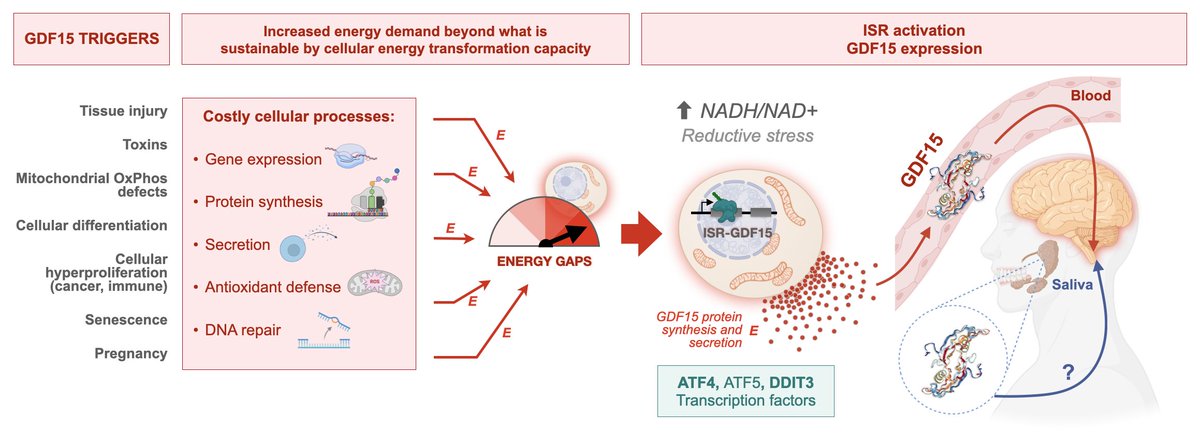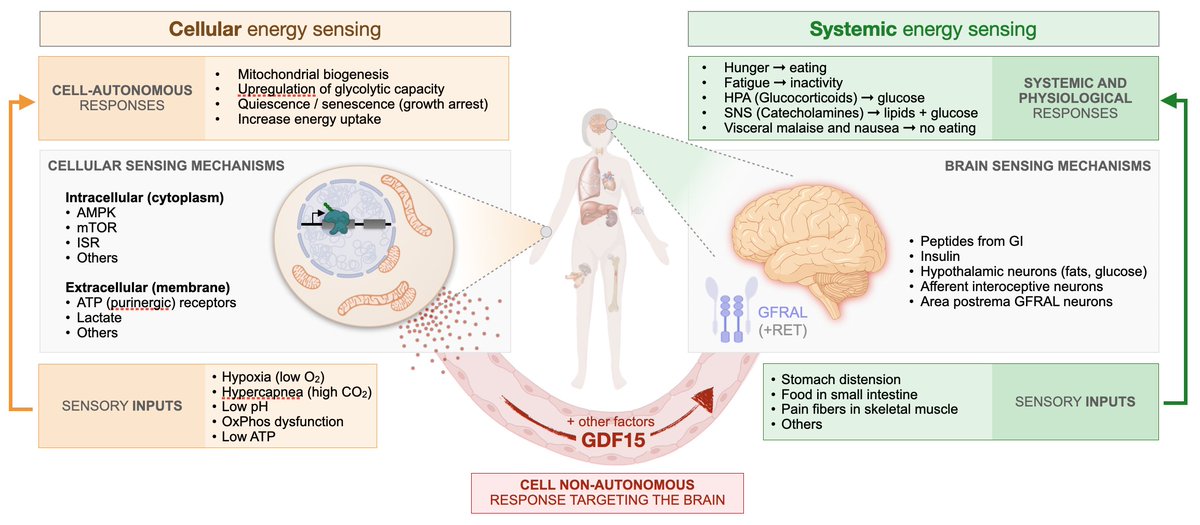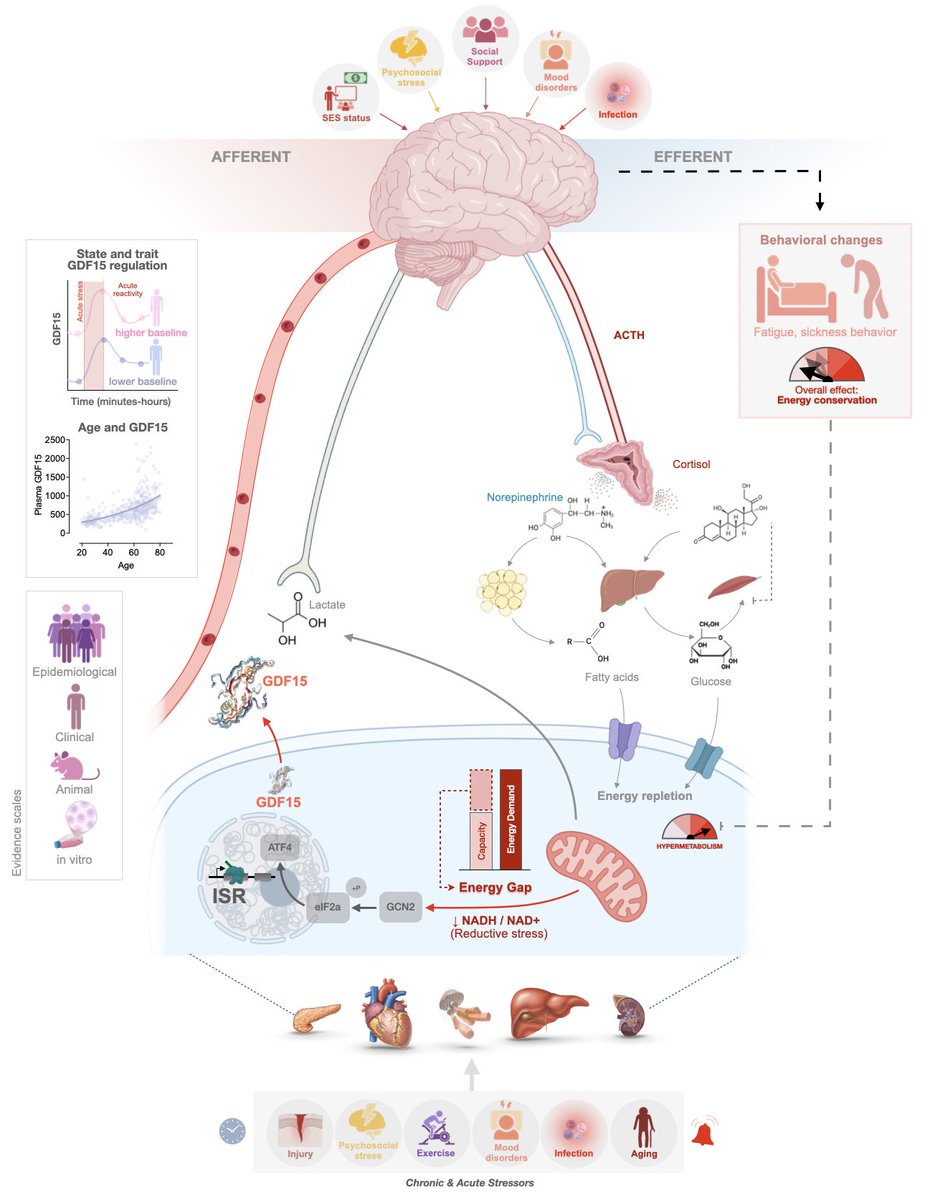Can we feel our mitochondria?
We feel pain (nociception), internal sensations (interoception), and even our immune system (immunoception)
How does the brain monitor our energy status?
In this preprint, we propose that the brain feels the balance of energy demand (burn rate) and energy transformation capacity (mitochondrial OxPhos capacity) via mitoception
Cellular studies, animal models, clinical, and human studies suggest that the cytokine GDF15 is the main signal of mitoception
Preprint by Cynthia Liu and colleagues
@torwager @LFeldmanBarrett @Danbelsky @Dr_Epel @cohenaginglab
osf.io/preprints/osf/…
Comments welcome!
We feel pain (nociception), internal sensations (interoception), and even our immune system (immunoception)
How does the brain monitor our energy status?
In this preprint, we propose that the brain feels the balance of energy demand (burn rate) and energy transformation capacity (mitochondrial OxPhos capacity) via mitoception
Cellular studies, animal models, clinical, and human studies suggest that the cytokine GDF15 is the main signal of mitoception
Preprint by Cynthia Liu and colleagues
@torwager @LFeldmanBarrett @Danbelsky @Dr_Epel @cohenaginglab
osf.io/preprints/osf/…
Comments welcome!

Every tissue expresses GDF15 at some level, whereas the receptor is only or mostly at appreciable levels in the brainstem
Perfect for body-to-brain signaling
Perfect for body-to-brain signaling

Not all cells express GDF15
Some cells may be more competent "metaboceptors" -- metabolic receptors -- than other cells
Some cells may be more competent "metaboceptors" -- metabolic receptors -- than other cells

Many different stressors can trigger GDF15. They appear to converge on "reductive stress", a consequence of energy resistance that activates the integrated stress response 

Other than the integrated stress response, there are multiple mechanisms responsible for sending energy supply and abundance - both at the cell and organism level 

We propose metaboception as a two-part interoceptive axis, with a dual output that change behaviors to save energy, and mobilize energy to rescue the energy gap within cells 

Beyond nausea, which @StephenORahilly and colleagues showed in pregnancy is driven by GDF15, chronically elevated GDF probably does not feel good
Most surprising to us were the robust associations between elevated GDF15 and states of mind including fatigue, depression, anxiety, social isolation, and other negative psychosocial factors
More research required on that front
Most surprising to us were the robust associations between elevated GDF15 and states of mind including fatigue, depression, anxiety, social isolation, and other negative psychosocial factors
More research required on that front
• • •
Missing some Tweet in this thread? You can try to
force a refresh


















